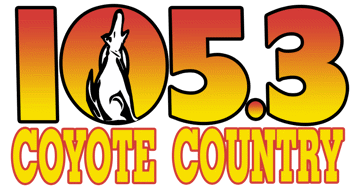June’s Mid-America Manufacturing Index Edges Above Growth Neutral

OMAHA, Neb. (July 1, 2024) — For only the third time in 2024, the Creighton University Mid-America Business Conditions Index, a leading economic indicator for the nine-state region stretching from Minnesota to Arkansas, climbed above the 50.0 growth neutral threshold.
Overall Index: The Business Conditions Index, which uses the identical methodology as the national Institute for Supply Management (ISM) and ranges between 0 and 100 with 50.0 representing growth neutral, rose to 51.3 for June from 48.2 in May, and represents the third time in 2024 that the index has risen above growth neutral.
“The overall index, much like the U.S. reading, has vacillated around growth neutral since December of 2023. Additionally, supply managers remained pessimistic regarding the 2024 outlook with approximately 48% expecting a downturn in economic activity for the remainder of 2024,” said Ernie Goss, PhD, director of Creighton University’s Economic Forecasting Group and the Jack A. MacAllister Chair in Regional Economics in the Heider College of Business.
According to regional manufacturing supply managers, approximately 6% have brought all of their international purchases back to the U.S. (i.e., reshored). Another 42% have reshored a portion of their purchasing to the U.S.
The Mid-America report is produced independently of the national ISM.
Employment: After climbing to growth neutral for December, the employment gauge has tumbled below 50.0 for the past six months. The June employment index increased slightly to 44.0 from May’s 43.7.
Other comments from supply managers in June:
“Buying very little offshore now whereas not before.”
“We never changed any of our purchasing methods in regard to domestic or international. Everything stayed the same after Covid as before Covid. Some lead-times changed but that was it.”
“Remote work needs to be addressed.”
“Domestic producers have continuing production issues that make them unreliable. The only alternative is to purchase raw materials from overseas.”
“Covid changed many businesses and some had to close and have never returned. I've noticed others that stayed open and struggled ever since. So Covid has had a long-lasting effect.”
Wholesale Prices: The June price gauge dropped to 61.4 from 70.8 in May, indicating cooling inflationary pressures. “The regional inflation yardstick has moved into a range indicating inflationary pressures moving toward the Federal Reserve’s (Fed) target for the second half of 2024. As a result, I expect the Fed to cut interest rates at its September meetings,” said Goss.
Confidence: Looking ahead six months, economic optimism, as captured by the June Business Confidence Index, increased slightly to 34.2 from May’s 33.2. “Approximately 48% of supply managers expect worsening business conditions over the next six months. This is a deterioration from May’s 42% of supply managers expecting slowing economic growth,” said Goss.
Inventories: The regional inventory index, reflecting levels of raw materials and supplies, expanded to 57.3 from May’s 55.6. Said Goss, “At this time, it cannot be determined if the buildup in inventories over the last several months is due to higher expected future sales or a slowdown in current sales producing rising inventories.”
Trade: The rising value of the U.S. dollar, making U.S. goods less competitively priced abroad, is hurting exports. As a result, export numbers worsened for the month with new export orders sinking to 45.3 from 46.7 in May. The stronger U.S. dollar pushed the import reading up to 52.2 from 41.2 in May.
“According to the latest U.S. International Trade Administration data, the region’s manufacturing sector expanded year-to-date 2024 exports to $29.0 billion from $27.8 billion for the same period in 2023 for a 4.1% gain,” said Goss.
Other survey components of the June Business Conditions Index were: new orders increased to 49.0 from 47.9 in May; the production or sales index climbed to 54.3 from 43.7 in May; and the speed of deliveries of raw materials and supplies rose to 52.1 from May’s 50.1. The increase indicates a slight expansion in supply chain disruptions and delivery bottlenecks for the month.
The Creighton Economic Forecasting Group has conducted the monthly survey of supply managers in nine states since 1994 to produce leading economic indicators of the Mid-America economy. States included in the survey are Arkansas, Iowa, Kansas, Minnesota, Missouri, Nebraska, North Dakota, Oklahoma, and South Dakota.
Below are the state reports:
Arkansas: The state’s Business Conditions Index improved to 53.7 for June from 52.5 for May. Components from the June survey of supply managers were: new orders at 48.2; production or sales at 55.0; delivery lead time at 54.6; inventories at 62.0; and employment at 48.8. According to the latest U.S. International Trade Administration data, Arkansas’ manufacturing sector expanded year-to-date 2024 exports to $2.0 billion from $1.8 billion for the same period in 2023 for a 5.8% gain.
Iowa: The state’s Business Conditions Index for June declined to 53.3 from 53.5 in May. Components of the overall June index were: new orders at 54.7; production or sales at 51.6; delivery lead time at 54.2; employment at 46.1; and inventories at 59.8. According to the latest U.S. International Trade Administration data, 2024 exports for Iowa’s manufacturing sector year-to-date fell from $5.8 billion to $5.4 billion for the same period in 2023 for a 7.0% loss.
Kansas: The Kansas Business Conditions Index for June climbed to 57.1 from May’s 51.0. Components of the leading economic indicator from the monthly survey of supply managers for June were: new orders at 48.5; production or sales at 56.6; delivery lead time at 55.9; employment at 51.6; and inventories at 68.5. According to the latest U.S. International Trade Administration data, Kansas’ manufacturing sector expanded year-to-date 2024 exports to $4.1 billion from $3.8 billion for the same period in 2023 for a 6.7% gain.
Minnesota: The June Business Conditions Index for Minnesota increased to 47.6 from 46.3 in May. Components of the overall June index were: new orders at 47.7; production or sales at 53.4; delivery lead time at 52.4; inventories at 34.6; and employment at 50.1. According to the latest U.S. International Trade Administration data, Minnesota’s manufacturing sector expanded year-to-date 2024 exports to $5.3 billion from $4.8 billion for the same period in 2023 for an 11.6% gain.
Missouri: The state’s June Business Conditions Index climbed to a regional high of 61.8 from 55.2 in May, also a regional high. Components of the overall index from the survey of supply managers for June were: new orders at 49.1; production or sales at 58.0; delivery lead time at 58.9; inventories at 84.2; and employment at 59.1. According to the latest U.S. International Trade Administration data, Missouri’s manufacturing sector expanded year-to-date 2024 exports to $5.4 billion from $4.9 billion for the same period in 2023 for a 10.3% gain.
Nebraska: For a second time in the past three months, Nebraska’s overall index rose above growth neutral. The state’s June Business Conditions Index increased to 51.6 from 45.4 in May. Components of the index from the monthly survey of supply managers for June were: new orders at 48.0; production or sales at 54.4; delivery lead time at 57.8; inventories at 53.8; and employment at 43.7. According to the latest U.S. International Trade Administration data, Nebraska’s manufacturing sector expanded year-to-date 2024 exports to $2.4 billion from $2.2 billion for the same period in 2023 for a 7.6% gain.
North Dakota: For a fourth straight month, the state’s overall index fell below growth neutral. The state’s overall, or Business Conditions Index, increased to a regional low of 45.5 from 40.2 in May, also a regional low. Components of the overall index for June were: new orders at 47.2; production or sales at 51.8; delivery lead time at 38.3; employment at 42.3; inventories at 38.3. According to the latest U.S. International Trade Administration data, North Dakota 2024 year-to-date exports sank from $1.8 billion to $1.5 billion for the same period in 2023 for a 16.7% loss.
Oklahoma: The state’s Business Conditions Index slumped to 47.5 for June from May’s 48.4. Components of the overall June index were: new orders at 47.7; production or sales at 53.4; delivery lead time at 52.3; inventories at 49.9; and employment at 34.3. According to the latest U.S. International Trade Administration data, Oklahoma’s manufacturing sector expanded year-to-date 2024 exports to $2.2 billion from $1.9 billion for the same period in 2023 for an 18.3% gain.
South Dakota: The June Business Conditions Index for South Dakota increased to 46.9 from May’s 43.2. Components of the overall June index were: new orders at 46.7; production or sales at 50.0; delivery lead time at 47.6; inventories at 46.8; and employment at 43.4. According to the latest U.S. International Trade Administration data, exports for South Dakota’s manufacturing sector year-to-date fell to $679 million from $767 million for the same period in 2023 for an 11.4% loss.
Survey results for the month of July will be released on August 1, 2024, the first business day of the month.
